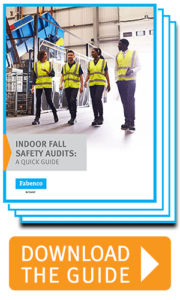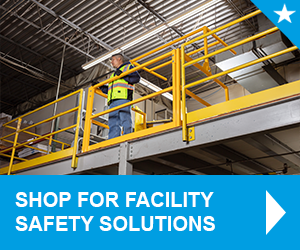
When it comes to active fall protection, what you do and what you don’t do are equally important. You might have the best OSHA-compliant fall protection harnesses and safety gates available, but they may not keep your employees safe if they’re not used correctly.
For the safety of your team, make sure everyone is familiar with the right – and wrong – ways to use your active fall protection equipment:
DO Educate Your Employees
Every employee should receive training regarding their safety equipment and how to safely perform their job tasks. OSHA standard 1926.503 says, “The employer shall provide a training program for each employee who might be exposed to fall hazards. The program shall enable each employee to recognize the hazards of falling and shall train each employee in the procedures to be followed in order to minimize these hazards.”
Untrained employees are a risk to themselves and everybody else on the work site. Training should occur any time you hire a new employee or start using new equipment, or as a refresher for long-time workers. As weeks and months go by without incident, it can be easy to get complacent or even forget certain safety steps. Refresher training sessions help you keep your good safety record going.
DON’T Use Equipment Without Inspecting It
A worker should never put on a safety harness or attach a self retracting lifeline without first inspecting it to ensure it’s in proper working condition. Regular use will wear the equipment down over time, so these inspections must occur every day, before every use. OSHA specifies what to do if equipment has been involved in a fall: the item “…must be removed from service immediately and not used again until a competent person inspects the system or components and determines that it is not damaged and safe for use for employee personal fall protection.”
DO Ask a Co-Worker for a Buddy Check When Putting on a Safety Harness
Proper fit is one thing; proper wear is another. If a strap is twisted, fall protection harnesses may not work correctly in a fall. Employees should ask their co-workers to look at their backs to ensure all straps are straight and secure. Double check that all buckles, clasps, and other connectors are properly attached.
DON’T Wear Equipment That Doesn’t Fit Properly
If a safety harness is uncomfortable, an employee may wear it too loosely—which can cause serious injury in a fall, even if the improperly-fitted harness does manage to stop the person from hitting the ground. If the workers wear it too tight, the harness could cut off circulation. Moreover, an improper fit can be more dangerous than not wearing a harness at all, because it gives the worker a false sense of security.
OSHA states, “If the personal protective equipment does not fit properly, it can make the difference between being safely covered or dangerously exposed.” It is an employer’s responsibility to provide equipment that fits correctly, no matter the size or the shape of the person wearing it.
DO Attach Your Connecting Device To An Appropriate Anchor

Additionally, the anchor should not be below the dorsal D-ring. Doing so increases the distance an employee would fall, which can put additional strain on the safety equipment—potentially to the point of failure. If there are no other options for an anchor point, make sure you’re choosing a lanyard that is built to withstand the additional free fall.
DON’T Store Fall Protection Harnesses and Other Equipment Outside
All protective gear should be cleaned and carefully stored in a cool, dry place after use. Continued exposure to sunlight or freezing and thawing will damage your equipment, while proper care ensures a longer lifespan. Part of a worker’s safety training should include caring for the equipment.
DO Ensure You’re Using the Right Equipment for the Job
On a flat roof where the employees do not need to access the edge, a fall restraint system may be more appropriate than a fall arrest system, and in some cases you might need a combination of active and passive fall protection. If you are using fall arrest systems, it’s important to choose the right type and length of lanyard and the right configuration for a horizontal lifeline system.
OSHA regulations should be considered minimum requirements: best practice is to always offer more layers of protection for your employees. Taking those extra steps indicate the value you place on safety in the workplace; not only does this keep everyone safer, it also builds trust between employees and management and helps workers feel confident about reporting safety hazards.
DON’T Allow Anyone to Work Without Safety Equipment
It doesn’t matter if the job is short or simple: if it puts an employee in a position where a fall is possible, he or she must have a guard rail, safety harness, self retracting lifeline, and/or other safety equipment. Build a culture of safety within your organization so that no employee feels pressured to perform a task without the right protection. They should also feel empowered to report safety hazards and broken or insufficient active fall protection.
DO Ensure You’re Using OSHA-Compliant Equipment
Every component of the safety harness and self retracting lifeline have specific requirements they must meet per both OSHA and ANSI. To make sure the D-rings, snap hooks, lanyards, connectors, and everything else are made of the right materials and able to support the minimum required amount of weight and force, get your active fall protection from a company who only offers OSHA-compliant equipment.
If you have any questions about fall protection harnesses, safety gates, or other safety equipment, please contact us.





